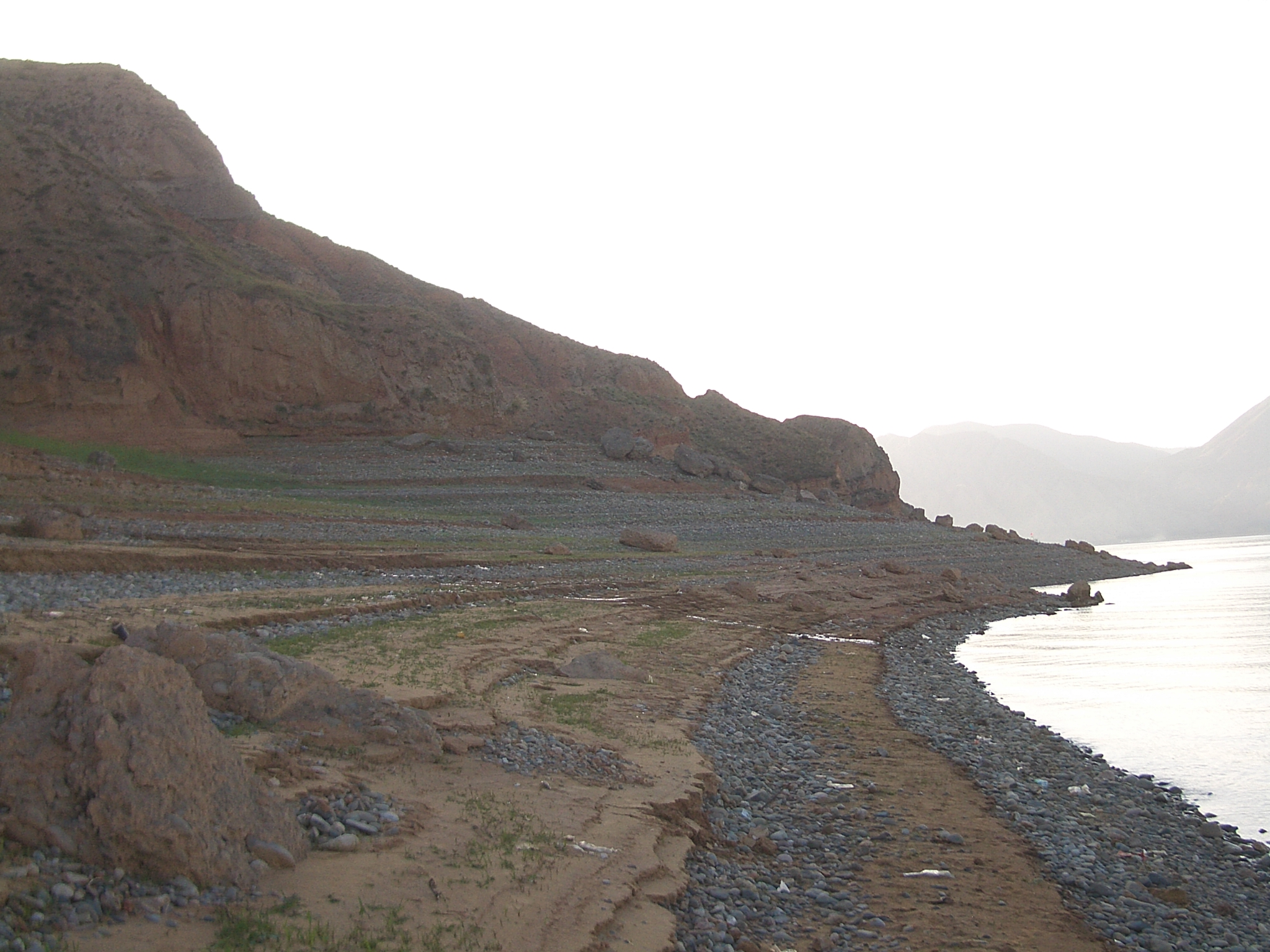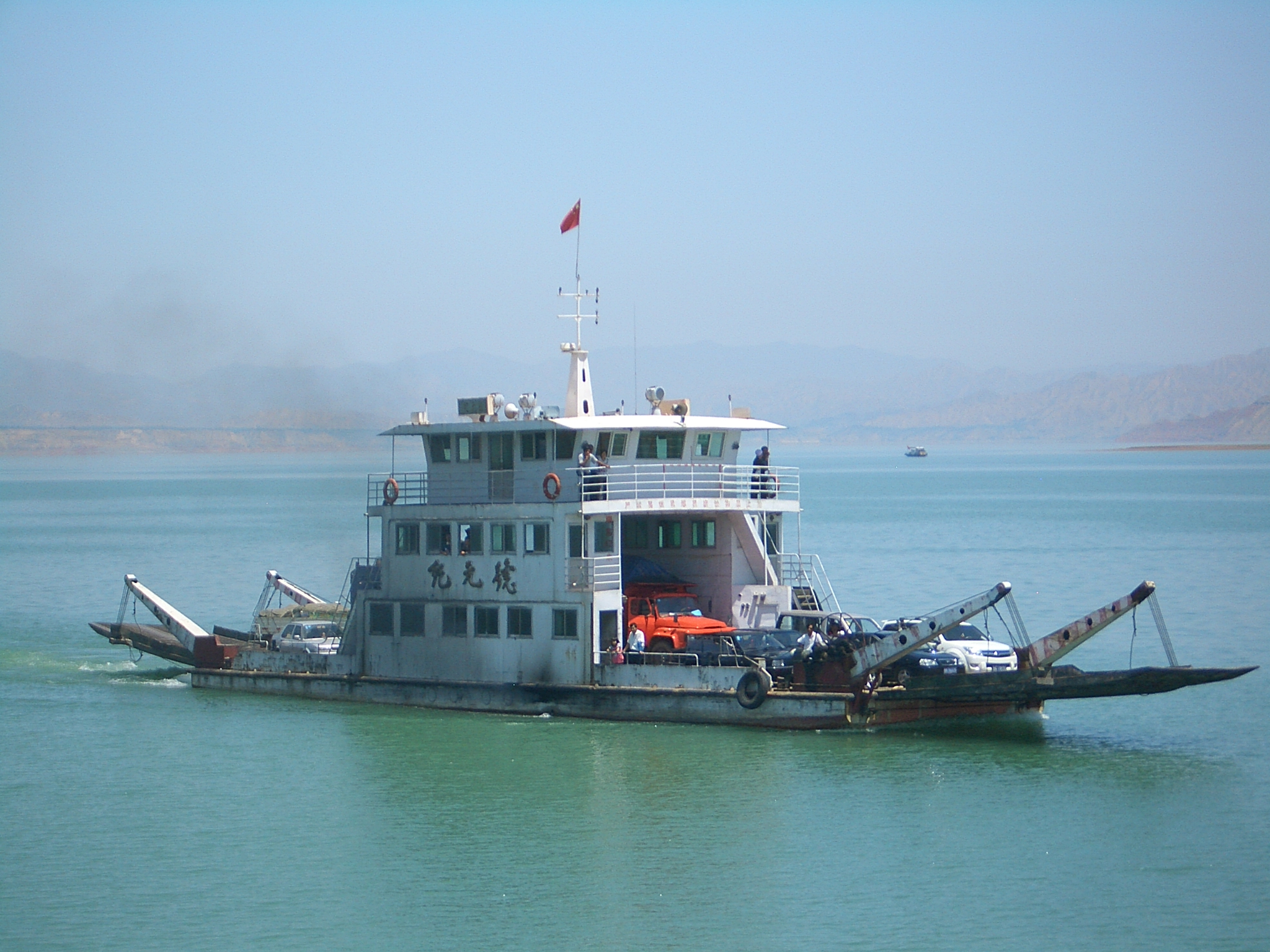|
ňłśň«Âň│íŠ░┤ň║ô
The Liujiaxia Dam () is a major hydroelectric dam on the upper Yellow River, in Linxia Hui Autonomous Prefecture of China's Gansu Province. The dam and its hydroelectric facility (Liujiaxia Hydroelectric Station, ) are located in Liujia Gorge, or ''Liujiaxia'' (), just downstream from where the Tao River flows into the Yellow River. The site is on the eastern outskirts of Liujiaxia Town. Since Liujiaxia Town (China), Town is the county seat of Yongjing County, Yongjing County, it is often marked on less detailed maps simply as "Yongjing". The Liujiaxia Reservoir () formed by the dam is the largest body of water within Gansu. The primary purpose of the dam is generating electricity; in addition, it is used for flood control, irrigation, and "ice flood prevention". The dam's location is about west-south-west (or upstream) from the provincial capital Lanzhou. Liujiaxia Dam is a concrete gravity dam high and wide on top. The main section of the dam is long; including auxiliary se ... [...More Info...] [...Related Items...] OR: [Wikipedia] [Google] [Baidu] |
Liujiaxia Reservoir
The Liujiaxia Reservoir () is a reservoir in China's Gansu Province, formed by the Liujiaxia Dam on the Yellow River. It occupies over ,"ńŞ┤ňĄĆŠŚůŠŞŞ" (Linxia Tourism), published by Linxia Hui Autonomous Prefecture Tourist Board, 2003. 146 pages. No ISBN. Pages 26=27. and is located entirely within Linxia Hui Autonomous Prefecture. The reservoir's shores belong to the prefecture's Yongjing County (the narrow northern part, and the north shore of the wide southern part), Dongxiang Autonomous County (eastern part of the south shore), Linxia County (western part of the south shore), and Jishishan Bonan, Dongxiang and Salar Autonomous County (the small westernmost section of the south shore). The Daxia River and the Tao River flow into the reservoirs, forming wide bays. The water level in Liujiaxia Reservoir is usually reported as above the sea level, but in practice it varies significantly, in accordance with the water flow and human needs. The initial capacity of the reservoir was ... [...More Info...] [...Related Items...] OR: [Wikipedia] [Google] [Baidu] |
Tao River
Tao River () is a right tributary of China's Yellow River. It starts in Xiqing Mountains () near the GansuÔÇôQinghai border, flows eastward across Gannan Tibetan Autonomous Prefecture, and then northward more or less along the border between Dingxi Prefecture-level City in the east and Gannan and Linxia Prefectures in the west. It flows into the Yellow River (actually, the Liujiaxia Reservoir) near Liujiaxia Town (the county seat of Yongjing County), just upstream of Liujiaxia Dam. Hydro power A number of dams with hydroelectric power plants have been constructed on the Tao River. According to Google Maps, they include dams at the following locations (upstream to downstream): * ÔÇöGucheng Station, near Zhongzhai Town () in Min County Min County or Minxian is administratively under the control of the prefecture-level city of Dingxi, in the south of Gansu province, China. In ancient times, it was known as Lintao County due to its location along the Tao River. It was founded ... [...More Info...] [...Related Items...] OR: [Wikipedia] [Google] [Baidu] |
Yellow River
The Yellow River or Huang He (Chinese: , Standard Beijing Mandarin, Mandarin: ''Hu├íng h├ę'' ) is the second-longest river in China, after the Yangtze River, and the List of rivers by length, sixth-longest river system in the world at the estimated length of . Originating in the Bayan Har Mountains in Qinghai province of Western China, it flows through nine provinces, and it empties into the Bohai Sea near the city of Dongying in Shandong province. The Yellow River basin has an eastÔÇôwest extent of about and a northÔÇôsouth extent of about . Its total drainage area is about . The Yellow River's basin was the Yellow River civilization, birthplace of ancient Chinese, and, by extension, Far East, Far Eastern civilization, and it was the most prosperous region in early Chinese history. There are frequent devastating natural disasters in China, floods and course changes produced by the continual elevation of the river bed, sometimes above the level of its surrounding farm fi ... [...More Info...] [...Related Items...] OR: [Wikipedia] [Google] [Baidu] |
Hydroelectric Power Stations In Gansu
Hydroelectricity, or hydroelectric power, is electricity generated from hydropower (water power). Hydropower supplies one sixth of the world's electricity, almost 4500 TWh in 2020, which is more than all other renewable sources combined and also more than nuclear power. Hydropower can provide large amounts of low-carbon electricity on demand, making it a key element for creating secure and clean electricity supply systems. A hydroelectric power station that has a dam and reservoir is a flexible source, since the amount of electricity produced can be increased or decreased in seconds or minutes in response to varying electricity demand. Once a hydroelectric complex is constructed, it produces no direct waste, and almost always emits considerably less greenhouse gas than fossil fuel-powered energy plants. [...More Info...] [...Related Items...] OR: [Wikipedia] [Google] [Baidu] |
Buildings And Structures In Gansu
A building, or edifice, is an enclosed structure with a roof and walls standing more or less permanently in one place, such as a house or factory (although there's also portable buildings). Buildings come in a variety of sizes, shapes, and functions, and have been adapted throughout history for a wide number of factors, from building materials available, to weather conditions, land prices, ground conditions, specific uses, prestige, and aesthetic reasons. To better understand the term ''building'' compare the list of nonbuilding structures. Buildings serve several societal needs ÔÇô primarily as shelter from weather, security, living space, privacy, to store belongings, and to comfortably live and work. A building as a shelter represents a physical division of the human habitat (a place of comfort and safety) and the ''outside'' (a place that at times may be harsh and harmful). Ever since the first cave paintings, buildings have also become objects or canvasses of much artis ... [...More Info...] [...Related Items...] OR: [Wikipedia] [Google] [Baidu] |
Dams In China
Dams and reservoirs in China are numerous and have had a profound effect on the country's development and people. According to the World Commission on Dams in 2000, there were 22,104 dams over the height of operating in China. Of the world's total large dams, China accounts for the most ÔÇô of them; of which are used for irrigation. Accordingly, the oldest in China still in use belongs to the Dujiangyan Irrigation System which dates back to 256 BC. In 2005, there were over 80,000 reservoirs in the country and over 4,800 dams completed or under construction that stands at or exceed in height. As of 2007, China is also the world's leader in the construction of large dams; followed by Turkey, and Japan in third. The tallest dam in China is the Jinping-I Dam at , an arch dam, which is also the tallest dam in the world. The largest reservoir is created by the Three Gorges Dam, which stores 39.3 billion m3 (31,900,000 acre feet) of water and has a surface area of . Three Gorges is al ... [...More Info...] [...Related Items...] OR: [Wikipedia] [Google] [Baidu] |
List Of Power Stations In China
The following page lists some power stations in mainland China divided by energy source and location. Coal Nuclear Hydroelectric Solar Tide Wind By location The following pages list the major power stations in China by province: * List of major power stations in Anhui * List of major power stations in Beijing * List of major power stations in Chongqing * List of major power stations in Fujian province * List of major power stations in Gansu * List of major power stations in Guangdong * List of major power stations in Guangxi * List of major power stations in Guizhou * List of major power stations in Hainan province * List of major power stations in Hebei province * List of major power stations in Heilongjiang * List of major power stations in Henan province * List of power stations in Hong Kong * List of major power stations in Hubei province * List of major power stations in Hunan province * List of major power stations in Inner Mongolia ... [...More Info...] [...Related Items...] OR: [Wikipedia] [Google] [Baidu] |
Great Leap Forward
The Great Leap Forward (Second Five Year Plan) of the People's Republic of China (PRC) was an economic and social campaign led by the Chinese Communist Party (CCP) from 1958 to 1962. CCP Chairman Mao Zedong launched the campaign to reconstruct the country from an agrarian economy into a communist society through the formation of people's communes. Mao decreed that efforts to multiply grain yields and bring industry to the countryside should be increased. Local officials were fearful of Anti-Rightist Campaigns and they competed to fulfill or over-fulfill quotas which were based on Mao's exaggerated claims, collecting non-existent "surpluses" and leaving farmers to starve to death. Higher officials did not dare to report the economic disaster which was being caused by these policies, and national officials, blaming bad weather for the decline in food output, took little or no action. Millions of people died in China during the Great Leap, with estimates ranging from 15 to 55 ... [...More Info...] [...Related Items...] OR: [Wikipedia] [Google] [Baidu] |
Man Jiang Hong
''Man Jiang Hong'' () is the title of a set of Chinese lyrical poems (''ci'') sharing the same pattern. If unspecified, it most often refers to the one attributed to the Song dynasty general Yue Fei. Poem and meaning Authorship controversy The common belief is that Yue Fei wrote the poem in 1133 at the age of 30 during the JinÔÇôSong Wars. In 1127, the Song emperors Qinzong and Huizong were captured by forces of the Jurchen-led Jin dynasty (this incident is known as the " Humiliation of Jingkang", as mentioned in the poem). Emperor Gaozong retreated to present-day Hangzhou in 1127 and established the Southern Song dynasty. However, James T. C. Liu, a history professor from Princeton University, states that Yue Fei's version was actually written by a different person in the early 16th century. The poem was not included in the collected works of Yue Fei compiled by Yue's grandson, Yue Ke (ň▓│Šč»; 1183ÔÇôpost 1234), and neither was it mentioned in any major works written b ... [...More Info...] [...Related Items...] OR: [Wikipedia] [Google] [Baidu] |
Guo Moruo
Guo Moruo (; November 16, 1892 ÔÇô June 12, 1978), courtesy name Dingtang (), was a Chinese author, poet, historian, archaeologist, and government official. Biography Family history Guo Moruo, originally named Guo Kaizhen, was born on November 10 or 16, in the small town of Shawan, located on the Dadu River some southwest from what was then called the city of Jiading (Lu) (Chia-ting (Lu), ), and now is the central urban area of the prefecture level city of Leshan in Sichuan Province. At the time of Guo's birth, Shawan was a town of some 180 families.David Tod Roy, "Kuo Mo-jo: The Early Years". Harvard University Press, Cambridge, Massachusetts. 1971. No ISBN. Guo's father's ancestors were Hakkas from Ninghua County in Tingzhou fu, near the western border of Fujian. They moved to Sichuan in the second half of the 17th century, after Sichuan had lost much of its population to the rebels/bandits of Zhang Xianzhong ( 1605ÔÇô1647). According to family legend, the only possessions ... [...More Info...] [...Related Items...] OR: [Wikipedia] [Google] [Baidu] |






